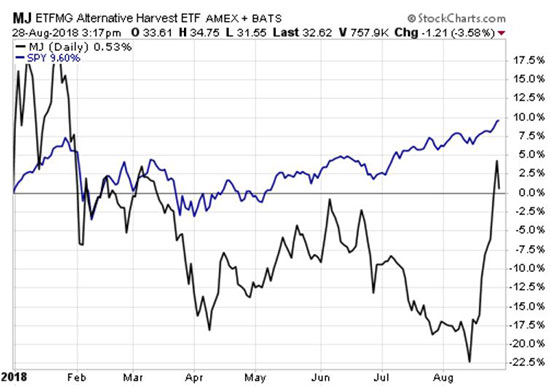[ad_1]
 Mary Ann Bartels has held many key roles at Bank of America Merrill Lynch, and currently she is head of ETF strategy and the firm’s Research Investment committee (RIC). She is, among other things, spearheading the bank’s ETF research and ratings efforts, while keeping a close eye on the economy. Bartels will be speaking at Inside ETFs, Feb. 10-13, in Hollywood, Florida.
Mary Ann Bartels has held many key roles at Bank of America Merrill Lynch, and currently she is head of ETF strategy and the firm’s Research Investment committee (RIC). She is, among other things, spearheading the bank’s ETF research and ratings efforts, while keeping a close eye on the economy. Bartels will be speaking at Inside ETFs, Feb. 10-13, in Hollywood, Florida.
ETF.com: What’s unique about BofA’s new coverage and ratings of ETFs?
Mary Ann Bartels: In October, we launched coverage on ETFs. The industry had not been able to have an opinion on ETFs based on the SEC ruling that ETFs were classified as IPOs because of the creation/redemption process. But legislation passed in Congress called the FAIR Act that now allows Wall Street to have opinions on ETFs.
So as a financial institution, we now have ratings on ETFs. If you’re a client of Bank of America Merrill Lynch, you have access to the research and financial advisors also have access to the research. What’s unique is that we now have opinions on ETFs, and this is the first time Wall Street can actually have an opinion. Before, you could only talk about factual information on ETFs.
We have a very large research department with industry analysts that cover a broad spectrum of companies, so we’ve decided to look at ETFs as portfolios—it’s not just about an index anymore.
We have a systematic process that’s made of three different components: E stands for efficiency. T stands for technical. F stands for fundamental.
Efficiency is generally all the factors the industry’s been using for years—tracking, NAV, bid/ask spread, liquidity. It’s really “E” that the industry has been looking at. “T,” the technicals, is important because price momentum is important. Our analyst has a proprietary 12-month price momentum indicator that we use.
And F, “fundamental,” is probably one of the most unique components, where we look at the stock level and at our analyst ratings on the stocks. We take those three components, compile them in a proprietary ranking system, and score ETFs within what we call peer groupings. We don’t look at ETFs in a silo, we compare them to similar ETFs.
ETF.com: Have you found that your ratings don’t always recommend the biggest, most liquid and most well-known ETFs? They aren’t always the best?
Bartels: Absolutely. The SPDR S&P 500 ETF Trust (SPY) is the most liquid equity in the world. It’s the deepest and it has options on it. That’s the default; if I want to own the S&P 500, I go to SPY.
But when you compare SPY to the iShares Core S&P 500 ETF (IVV) and the Vanguard S&P 500 ETF (VOO), efficiency really becomes the factor you look at, because they’re identical.
Fundamentals and technicals are really not going to apply here, so the “E” is what you focus on. And when you look at the “E,” IVV and VOO track the S&P 500 better, and, they’re cheaper.
There are times you want to pay a higher fee. If there’s a certain portfolio of stocks you want to own, that fit your investment goals and profile, it’s worth paying the extra fee on that ETF. But you have to look at the whole picture.
ETF.com: How often do the ETF ratings change? Is this a constant exercise?
Bartels: We run our models every day. Since we launched in October, we’ve had over 20 ETF rating changes.
ETF.com: When you’re researching and rating ETFs, does the macroeconomic picture enter that analysis?
Bartels: When it comes to the ETF work, no, we don’t input that. That will get indirectly put into the ETFs through our analyst’s weighting. The assumption is that the analyst is taking in all fundamental accounts coming up to their earnings number.
Now, I wear two different hats at the firm. I also run our RIC product. And in that, I closely watch macro events.
ETF.com: That’s the hat you’re going to be wearing on the Inside ETFs panel you’re scheduled to speak on?
Bartels: Correct, I’ll have my RIC hat on.
ETF.com: We’re hearing a lot about a slowdown in corporate earnings. What’s your view on the U.S. equity space right now?
Bartels: Markets have cycles. They have up cycles, they have down cycles. We do our year-ahead in late November, early December, and what we wrote back then is we expected corporate earnings to slow down dramatically to around 5%.
This is within our forecast, and we’re not surprised. All the benefits from the tax cut are pretty much priced in. We’ve seen global economies slow down. And we’re even forecasting that our own economy—which grew above trend for two years—will slow down and still grow, but slow at trend. Typically, when you have slower economic projections, that can translate into slower earnings.
We’re already there. We’re not calling for an earnings recession. We’re not calling for negative earnings. We were calling for a “baby bear” market. We didn’t expect it to happen in the month of December, but it did. We’re still expecting volatility to remain.
But we do believe we remain in a secular bull market. Even though this has been a cyclical correction, it’s been a bear cyclical correction. But we think the longer-term secular uptrend is up, so we’re buyers of the market.
[ad_2]
Source link

